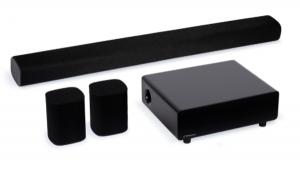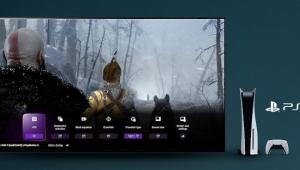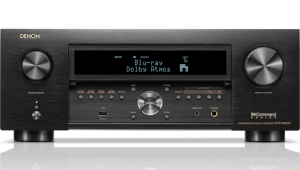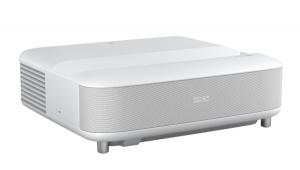Tech Trends 2013: Video Page 3
Plasma: So not dead it's funny
It's shocking to me how many in the non-tech press, and even some enthusiasts, think plasma is somehow an "old" technology that's going away or dying. After OLED, plasma demos had some of the best picture quality to be seen at the recent CES, and I'm including the Ultra HD ones.
Each of the three plasma manufacturers, Panasonic, Samsung, and LG, is introducing new sets for 2013. Panasonic, whose VT50 model won Sound & Vision's Video Product of the Year award in 2012, consolidated its lines a bit, dropping the oddly situated GT series and adding a new, high-end ZT60 series. Since last year's top-of-the-line VT50 was one of the best TV's I'd seen in years, the promise of a model that's significantly better is intriguing, to say the least.
At CES, Panasonic displayed the VT50 and ZT60 side by side showing the same content in a dark room. The two models were both allegedly "out of the box" and set to the Cinema picture mode, but I remember the VT50 I reviewed as having slightly a darker black level than what I saw in that booth. That said, the ZT60 was way darker than I ever remember seeing the VT50, and perhaps any plasma ever. Even up close, it barely looked like the ZT60 was even turned on when displaying a full black image. It also looked brighter than the VT50 with bright objects/scenes. Since the VT50 had one of the best contrast ratios I've ever measured in a flat-panel, this could mean that the ZT60 will leap into the "best ever" slot. We shall see.
But then there's Samsung. The company says its new F8500 series is twice as bright as last year's models. That's a massive increase, and it's also saying that black levels are improved. Unlike Panasonic, Samsung didn't have a darkened room in its booth to compare the new and old sets side by side. But having the plasmas out on the brightly lit show floor ended up being almost as impressive. Plasma TV pictures usually suffer when forced to compete with intense lighting. However, the F500s not only held their own but looked bright. That's a huge improvement.
LG seems to be the company that's least enthusiastic about plasma for 2013. It cut its total number of plasma lines down to three and its total models down to five, and only one of them is 3D. We reviewed LG's 50PM9700 last year and found it to be good but not great. This year's "top of the line" is the 60-inch 60PH6700. Following LG's model-number logic, this appears to be a mid-level model.
Given how much we expect plasma TVs to improve this year, the situation does raise a concern about OLED. True, OLEDs will be more energy efficient (though plasmas are no longer the energy hogs they used to be) and thinner (how thin a TV do you need?). But will OLED's contrast ratio benefits be visible enough to consumers to justify the price difference? Which is to say, if plasma offers 80% of the picture quality of OLED for 20% of the price, won't that slow the adoption of OLED? Don't get me wrong, I love OLED, but with how much better plasmas seem to be getting this year (and presumably will continue to get in the future), the biggest benefit of OLED, picture quality, is becoming less and less of a factor.
It's also possible that plasma TVs will get so good, and so inexpensive to manufacture, that there will be simply too few people willing to pay a premium for OLED. We've certainly seen this before. Pioneer's Kuro plasma was the best TV you could buy, and you paid for it. At the time, Panasonic's TVs cost a fraction of the price and offered "close enough" picture quality. Bye-bye, Kuro. While this direction would mean cheap, gorgeous plasma TVs, it would sadly kill off the promising OLED technology in its infancy.
For this year, though, we can't wait to see the Panasonic ZT60 and Samsung F8500. If they're even half as good as their respective manufacturers are saying, they'll be impressive indeed. -G.M.
- Log in or register to post comments














































